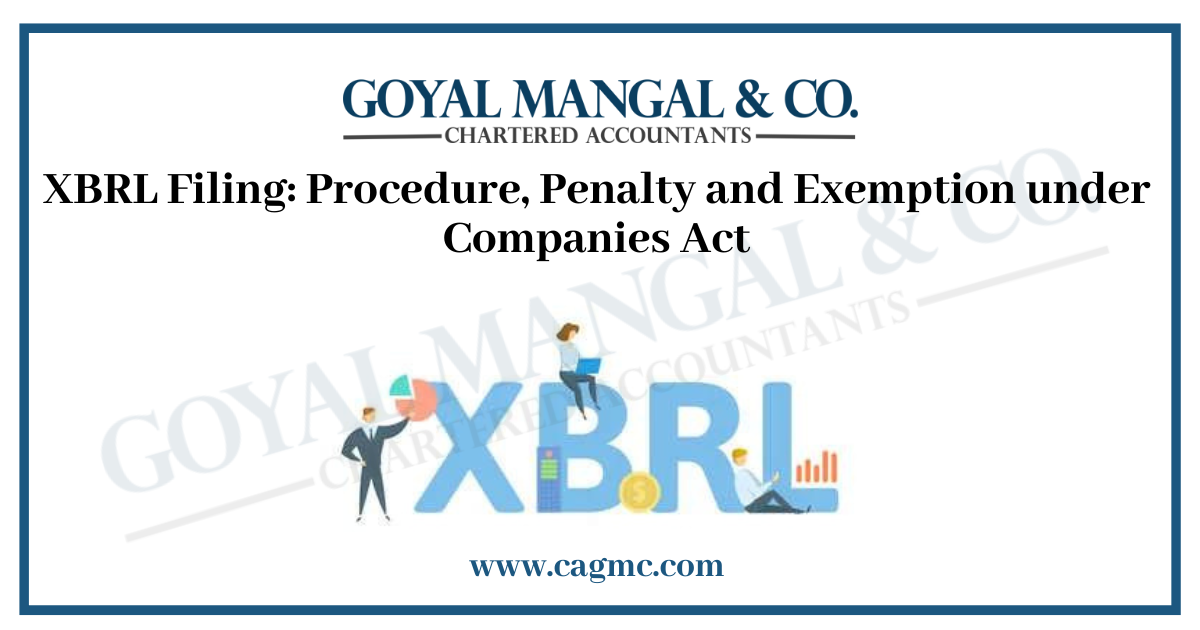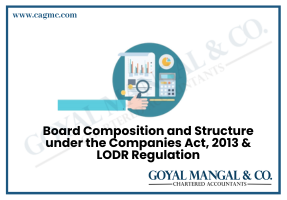 XBRL is used as an abbreviation for “Extensible Business Reporting Language”. It is a language that is used for electronic communication of business and financial data that revises the reporting of business across the world.
XBRL is used as an abbreviation for “Extensible Business Reporting Language”. It is a language that is used for electronic communication of business and financial data that revises the reporting of business across the world.
It provides a lot more benefits in regard to preparing, analyzing, and communicating business information. It saves costs by being highly efficient and improves accuracy. This is thoroughly reliable for all the persons that are involved in using and providing the financial data.
|
Table of Contents |
Abstract
XBRL is the only language that is used for the communication of data revolving around business and finance. It is as mentioned above used electronically for business reporting internationally.
It was introduced by the Ministry of Corporate Affairs (MCA) for filing of financial statements to the Registrar of Companies (hereinafter referred to as ROC. It is placed at the portal of the Ministry of Corporate Affairs (MCA).
The Companies Rules, 2011 for “Filing of forms and documents in Extensible Business Reporting Language” provides that some categories and classes of companies have to file their balance sheets and profit and loss accounts mandatorily with the ROC. And this has to be done using the XBRL taxonomy.
Successively, the Companies Rules, 2017 for “Filing of documents and forms in Extensible Business Reporting Language” further provided that the financial statements and other necessary documents shall be filed by certain categories/classes of companies mandatorily under Section 137 of the Companies Act, 2013, which states that the copies of financial statements shall be filed with the Registrar. The e-form by which it is filed is ‘AOC-4’.
Meaning and Purpose of filing XBRL
XBRL is an international standard for reporting business digitally and it is operated by an international Non-Profitable Organization. It commits to improving the reporting in the general public interest.
XBRL provides a language by which terms of reporting can be defined by the authority. These terms are used for the absolute representation of the contents of financial statements or other compliance forms, business reports, and Performances.
It allows the accurate and digital quick flow of information between organizations.
Applicability of XBRL
In accordance with the provisions mentioned under the Companies Act, 2013 (Section 137) the class of companies that shall mandatorily file their financial statements with other necessary documents in the XBRL form are listed below;
- The Companies that are listed with the stock exchanges and their respective Indian subsidiaries,
- The Companies that have their paid-up capital around five crore rupees (5,00,00,000/-) or above, or
- The Companies with a turnover of around a hundred crore rupees or above, and
- All those other companies for which the Companies (Indian Accounting Standards) Rules, 2015 mandates the requirement of preparing financial statements.
The organizations who adequately furnished their business and financial statements in XBRL following the provision under section 137 shall continue to carry on furnishing the financial statements with such other necessary documents as are required in general and conclusively shall eliminate the need to fall under any of the classes of companies as are listed above.
Similarly, the companies who furnished their financial statements in accordance with the Companies (Accounting Standards) Rules, 2006 shall furnish their business and financial statements through Taxonomy.
Apart from it, the Companies which continue to furnish their financial statements in accordance with the Companies (Indian Accounting Standards) Rules, 2015 shall file the necessary financial statements through the ‘IND-AS Taxonomy’.
The Benefits of XBRL Filing
Following are the benefits of filing XBRL:
- XBRL offers considerable advantages in all areas of company reporting and analysis. Advantages include automation, cost savings, quicker, more reliable, and accurate data handling, enhanced analysis, and better information and decision-making.
- XBRL enables financial data producers and users to reallocate resources away from time-consuming manual procedures including data comparison, assembling, and re-entry. Because of technologies that can validate and comprehend XBRL data, they may concentrate their efforts on analysis.
- XBRL is a flexible language designed to cover all elements of reporting in a wide range of nations and industries. We may tailor it to meet unique business demands, even at the level of individual businesses, due to its extensible nature.
MCA Rules on Cost Audit Report (CRA)
The organization is also required to file the Audit Report Cost with adequately required documents to the Central Government following Section 148, sub-section (6) of the Companies Act and the reports shall be furnished in accordance with the compliances.
Other additional documents would also be required, which shall be further filed through the costing taxonomy. This shall be for the fiscal year that starts prospectively from the 1st of April 2014.
The e-form CRA-4 shall be the format for the companies referring to the Companies “Cost Records and Audit” Rules of 2014.
Documents Required
The list of required documents that will be filed to furnish the information in regards to the business and financial statements of the company are as follows;
- Report of Auditor in word format,
- Conclusive Financial Statements in word and PDF format,
- Notes which are part of Accounts in word format,
- Report of Director and Notice with additional annexures in word format,
- Profit and loss account, Balance sheet, and recommended necessary notes of the previous year in PDF format,
- Challan and ADT-1 Form,
- List of Shareholders with PAN Card,
- Company’s PAN Card,
- AOC-4 and MGT-7 Forms of the previous year, and
- PAN Card of Shareholders holding more than 5% of Shares
Rules for XBRL Exemption
There are some exemptions for the NBCs (Non-Banking Financial Companies), HFCs (Housing Finance Companies), and the other Companies which are involved with the insurance or banking businesses.
The Company Secretary and Lawyers can also make sheets of XBRL by the software professionally.
The procedure of filing XBRL
The procedure by which XBRL shall be filed can be well understood by following the listed steps:
- The first step initiates with claiming the XBRL tool from the trustable vendors,
- After which the master data is created of the Directors, companies, and the Auditor in the claimed tool,
- Once the data is stored, attach whole of the Financials, Notes, Audit Reports, Annual Reports, Schedules, and the Director’s Report in the format of XBRL,
- The next step includes generating the instance documents (in XML Format),
- Then download the tool of validation from the site of the Ministry of Corporate Affairs, after which you will have to choose the subject taxonomy,
- On the validation tool, upload the document and the maps. The documents then shall be validated through the same tool,
- Scrutinize the document with the help of a validation tool soon as the documents are mapped or validated, and lastly
- Attach the document that is pre-scrutinized in the Form of AOC-4 to furnish that to the Registrar of Companies within 30 days from the date of the Annual General Meeting.
Provisions as per Companies Act, 2013 for the deadline of Filing XBRL
Under the Companies Act 2013, the provisions specify the ‘Duration within which Financial Statements shall be furnished with the Registrar of Companies. The extract of the provision provides that:
- The Companies shall file their position of the financial and business statements to the authority of the Registrar of Companies with consolidated financial statements along with additional documents that are mandatorily required with the financial statements.
- Such financial statements must be taken at the time of the Annual General Meeting and submitted to the Ministry of Corporate Affairs within 30 days of the specified Annual General Meeting along with the prescribed fee.
- In case Annual General Meeting was not adopted or postponed, then the duration of filing shall be within 30 days since the Annual General Meeting was held.
- When the Annual General Meeting is not held within 30 days of the last date before which the Annual General Meeting shall be initiated, in such case filing will be done after paying prescribed fees.
Penalty
When the company fails to copy the financial statements to the Registrar of Companies within the mentioned duration, in such case the company shall be liable to attract a penalty of 10,000/- (Ten Thousand Rupees).
In case such failure to copy that financial statement with the ROC continues, the penalty shall be levied 100/- (Hundred Rupees) for every consecutive day where such failure carries on to raise to a sum of 2, 00,000/- (Two Lakh Rupees).
Takeaway
The XBRL (Extensible Business Reporting Language) is the language based on international standards to communicate financial and business statements through an electronic mode, joining which provides several benefits. It perfectly reflects the information reported in accordance with the listed accounting standards.







